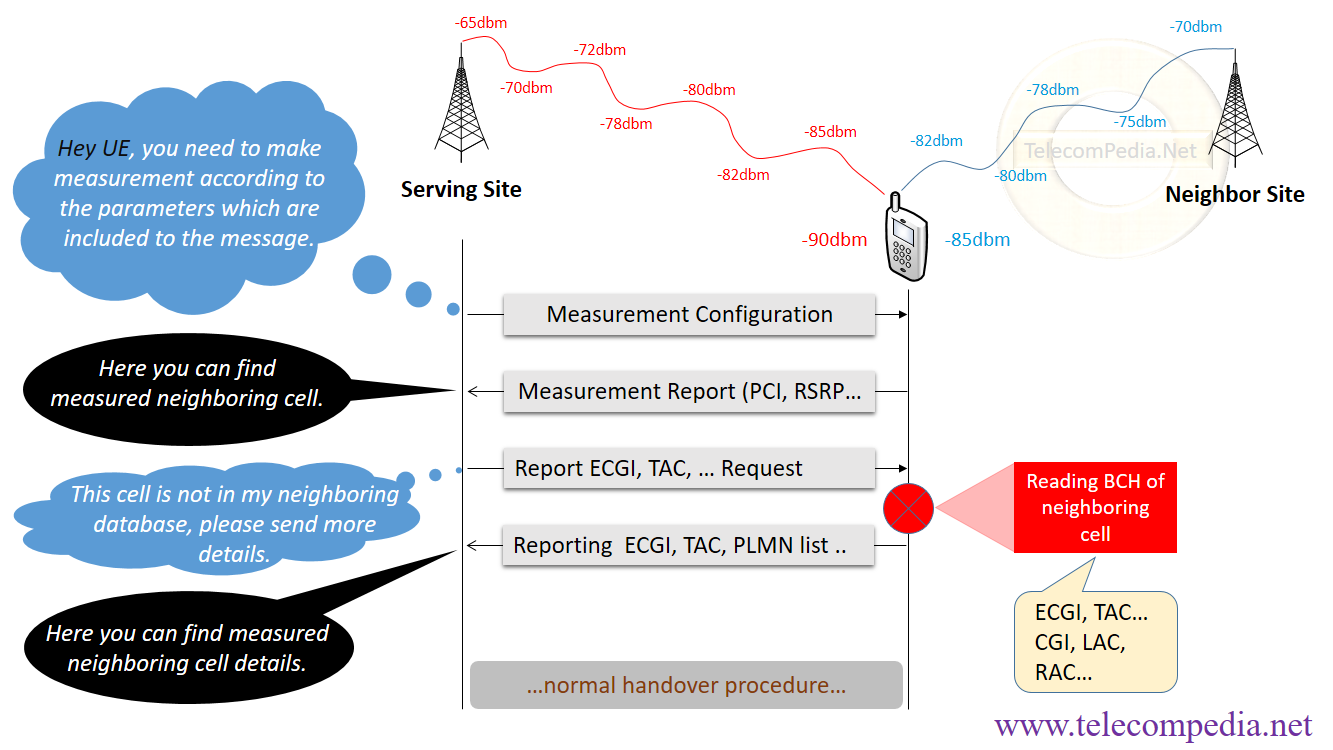Automatic Neighbor Relations or with shortened version ANR is a self-optimization function of SON. ANR automatically identifies and adds missing neighboring cells which have strongest signal. It removes incorrect or redundant neighboring cells, and it automatically optimizes the attributes of neighbor relationships. LTE ANR is available from LTE to LTE, LTE to WCDMA, LTE to GSM and LTE to CDMA.
Here we will see brief description of a neighbor addition by ANR:
1. The serving eNodeB delivers the measurement configuration to the UE, instructing the UE to measure neighboring cells.
2. The UE identifies that target cell meets the measurement requirements, and then it reports the PCI, RSRP of the target cell to the serving site.
3. The serving site checks whether target cell has the strongest signal, but PCI of the target cell is not exist in its neighboring database.
4. The serving site instructs the UE to read the ECGI, TAC, and PLMN list of the target cell.
*4. If the target cell is other technology (GSM/WCDMA), then it requires to read CGI, LAC and RAC.
5. The UE reports the ECGI, TAC, and PLMN list of the target cell to the serving site.
6. The eNodeB attempts to add the missing neighbor cell to its database with the provided data.
If the ANR neighbor addition procedure succeeds, the eNodeB selects the neighboring cell as the target cell for the handover.
